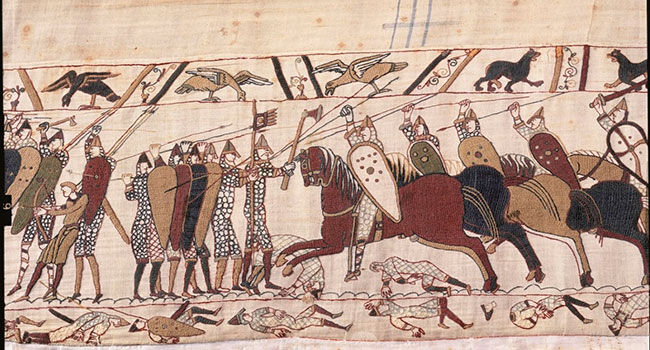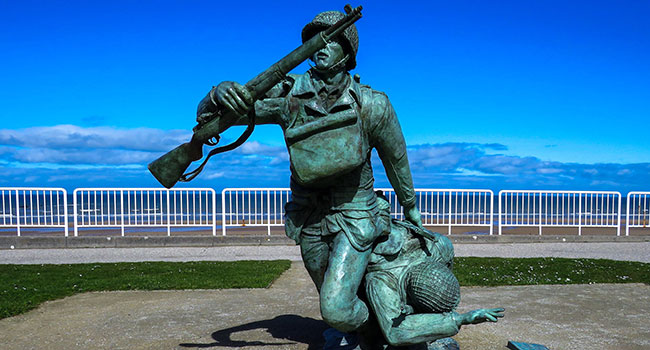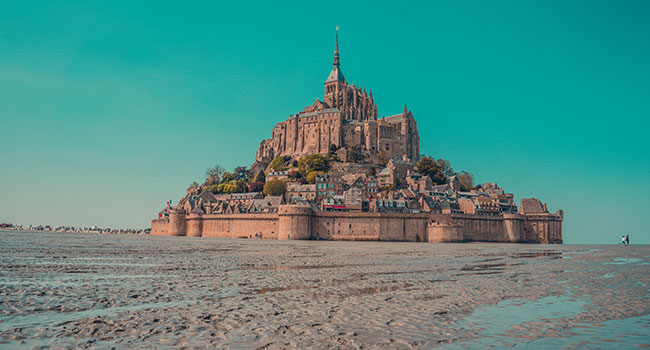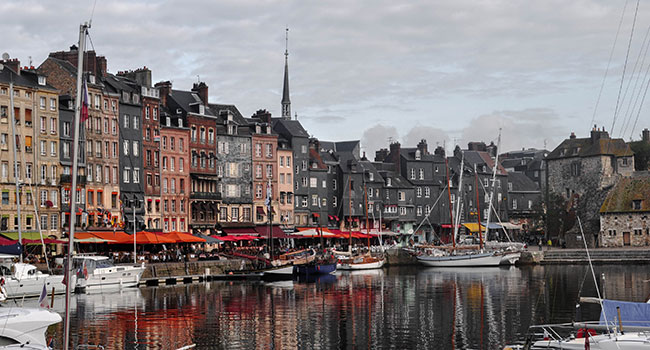 If you’re a student of history, ancient or modern, a drive through Normandy makes for a great holiday.
If you’re a student of history, ancient or modern, a drive through Normandy makes for a great holiday.
It was from Normandy that William the Conqueror set out to take over the throne of England in 1066. If you are into 20th-century history, there are the D-Day Invasion Beaches to explore.
Start in Rouen. Though it is a big city, there are plenty of historical sites to see in its centre. You can find a car park near the Place du Vieux Marche (the old Market Square). It was here that Joan of Arc was burned at the stake in 1431.
Wander up the street and under the large old tower clock that straddles the street. It is called the Gros-Horloge – the Big Clock. Make your way up to the Cathedrale Notre Dame. This gothic cathedral was the subject of several of Claude Monet’s paintings.
Leaving Rouen, you will soon come to the appealing harbour town of Honfleur, a great place to spend the night. Sit by the Vieux Bassin (the old Dock) and have a glass of wine with your outdoor dinner. Honfleur was a meeting place for Impressionist Painters, and it continues to attract artists today.
Continue your drive through Normandy to Bayeaux. This is where you can see the Bayeaux Tapestry. It’s really a story embroidered on cloth 20 inches wide and 230 feet long. (50 cm by 70 meters). It was created in 1066 and is now displayed in the Musee de la Tapisserie de Bayeaux. It is in a remarkable state of preservation.
An excellent presentation at the start of your museum visit prepares you to enjoy the tapestry as you wind through the museum to see it. Whether propaganda or factual, it describes the events of the Norman Invasion of England. Remember, however, that the Normans were the victors and the story is told from their perspective.

Photo from Musée de la Tapisserie de Bayeux
The scenes and vignettes let you visualize the events. The tapestry even shows Haley’s comet that passed by in 1066. Are you old enough to remember the comet excitement we went through when it swung back past the Earth in 1986?
The D-Day Invasion Beaches of Normandy are only about 16 km from Bayeaux. Take time to walk the beaches and reflect on what happened there. Visit a museum or two. Stop in the Cemeteries that honour all the brave soldiers who died there.

Omaha Beach, Colleville-Sur-Mer, Normandy, France. Photo by Mark Lawson
End your drive through Normandy with a visit to Mont Saint Michel, a UNESCO world heritage site near Avranches. The view of this monastery perched high on its rock in the middle of the bay is one of the great sights of France. It is absolutely beautiful from a distance.
Once you enter the city gates, it begins to feel like a crowded tourist trap but remember that it’s been attracting pilgrims and tourists for centuries. There have always been stalls selling things. Now it may be ashtrays and snow globes, whereas, at one time, it was candles and medallions. But don’t let that stop you.

Mont Saint Michel. Photo by Bharat Patil
Once you get through all of this and up to the monastery, you’ll find it is worth making your way through this gauntlet of crowds and shops. Spend the night on the island. The crowds will go home, and you’ll have a different perspective to remember it by.
As you return to Paris on your drive through Normandy, stop in Giverny and walk through the garden that Monet painted so often. From the sad reflections of war to the exuberant beauty of Monet’s garden, a drive through Normandy is a great vacation.
The opinions expressed by our columnists and contributors are theirs alone and do not inherently or expressly reflect the views of our publication.
© Troy Media
Troy Media is an editorial content provider to media outlets and its own hosted community news outlets across Canada.


